Wilkerson’s idea, Bugsy’s baby
The iconic Flamingo Hotel marks its 70th anniversary on the Las Vegas Strip
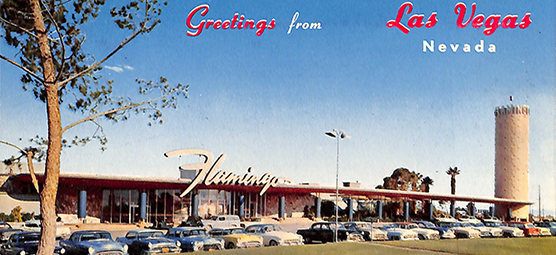
On the evening of December 26, 1946, it seemed that Benjamin “Bugsy” Siegel had done almost everything right for the debut of the Flamingo Hotel in Las Vegas. The casino was staffed with roulette, craps and blackjack dealers, restaurant and bar workers were ready to serve and the showroom was booked with famous entertainers, radio comedian Jimmy Durante and band leader Xavier Cugat. Siegel reassured Las Vegas residents by advertising the message, “Dress Optional at Anytime. Come as You Are.”
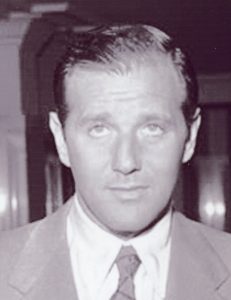 On that first of three opening nights, Siegel — tall, good-looking, immaculate, charismatic — appeared in a black tuxedo with a pink carnation. His girlfriend, Virginia Hill, arrived with her hair dyed platinum blond. Despite a surprise rainstorm in Los Angeles, some of the celebrities Siegel invited showed up, including actors George Raft, George Sanders, Sunny Tufts, Charles Colburn, Eleanor Parker and Vivian Blaine, and theater owner Sid Grauman.
On that first of three opening nights, Siegel — tall, good-looking, immaculate, charismatic — appeared in a black tuxedo with a pink carnation. His girlfriend, Virginia Hill, arrived with her hair dyed platinum blond. Despite a surprise rainstorm in Los Angeles, some of the celebrities Siegel invited showed up, including actors George Raft, George Sanders, Sunny Tufts, Charles Colburn, Eleanor Parker and Vivian Blaine, and theater owner Sid Grauman.
Traffic jammed the Los Angeles Highway outside. Guests walked past spotlights aimed skyward, Oriental date palm and Spanish cork trees, bushes lighted in blue and red. Once inside the Flamingo, they marveled at the green leather walls, thick carpeting, red upholstered furniture, an elegant men’s clothing store, a plush bar-lounge beside rows of slot machines. People had to struggle through the crowd in the casino. Durante and Cugat put on a show that drew cheers from the wall-to-wall audience. News columnists gushingly compared the interior to Walt Disney and MGM movie sets. Lots of $100-chip action crossed the gaming tables. “You never saw so many black chip gamblers in your life,” Siegel’s lawyer, Lou Weiner, later remarked.
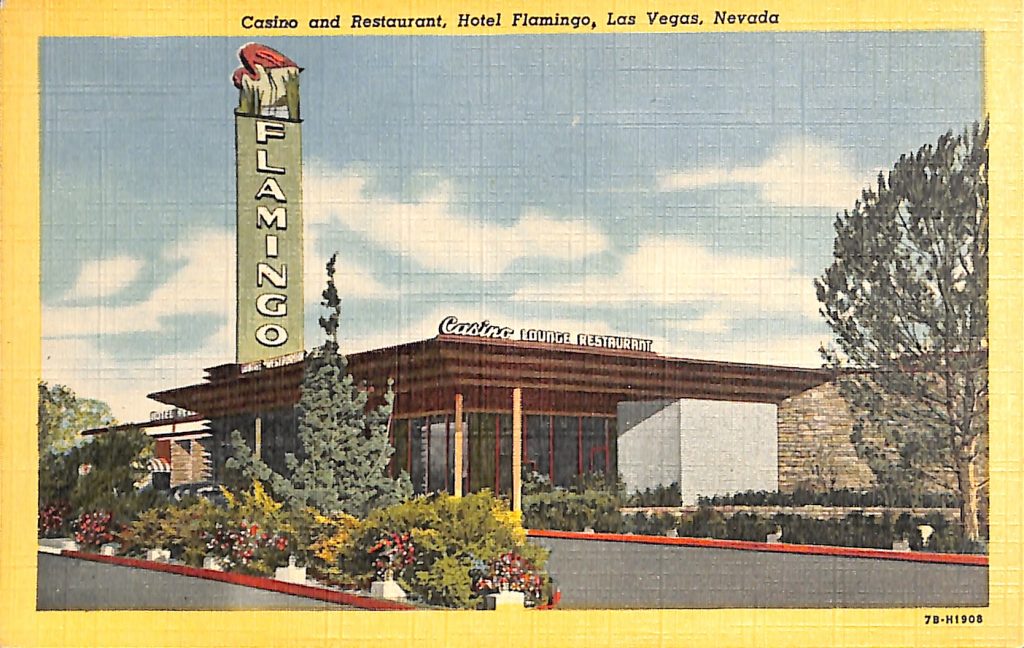 But Siegel’s luck declined steadily over the course of the Flamingo’s subsequent opening nights. The A-list celebrities he invited, the actors Lucille Ball, William Holden, Ava Garner and Veronica Lake among them, were no-shows despite the private planes and passenger train cars he reserved in Los Angeles. The stacks of cash that high-rollers risked on the gambling tables didn’t stay with the house, and the Flamingo was said to have lost upwards of $500,000 over several days. Siegel assaulted a roulette dealer he caught passing chips to a losing player. The comedienne and singer Rose Marie later reported performing one evening before less than two dozen people.
But Siegel’s luck declined steadily over the course of the Flamingo’s subsequent opening nights. The A-list celebrities he invited, the actors Lucille Ball, William Holden, Ava Garner and Veronica Lake among them, were no-shows despite the private planes and passenger train cars he reserved in Los Angeles. The stacks of cash that high-rollers risked on the gambling tables didn’t stay with the house, and the Flamingo was said to have lost upwards of $500,000 over several days. Siegel assaulted a roulette dealer he caught passing chips to a losing player. The comedienne and singer Rose Marie later reported performing one evening before less than two dozen people.
An amazing 28,000 people made it to the Flamingo those first nights, but because its hotel rooms were not yet completed, guests had to find rooms at the neighboring El Rancho Vegas and Last Frontier resorts, where they dropped some of what they had won at Siegel’s expense.
Siegel had every right to expect to take in a lot of money from the casino, but the unlikely winners left while their luck was good. The casino continued to bleed money through New Year’s Day. By late January, Siegel decided to close temporarily to save funds while he completed construction of the hotel and its planned amenities – an Olympic-sized pool, nine-hole golf course, badminton, handball and tennis courts. He placed a newspaper ad announcing the Flamingo would shut its doors from February 6 to March 1. He boasted of using imported marble and wood among the building materials, and that the Flamingo’s guest rooms, conceived by Hollywood designer Tom Douglas, would have private baths with individual connected sewers and tile with a color scheme that “harmonizes” with drapes and upholstered chairs in the bedroom.
But Siegel, the free spender, was in denial about his abilities as a successful businessman. In addition to sinking hundreds of thousands of his own funds into the project, he still had to contend with the millions he owed to New York Mafia kingpin Frank Costello, longtime friend and fellow gangster Meyer Lansky and several other East Coast Mob figures.
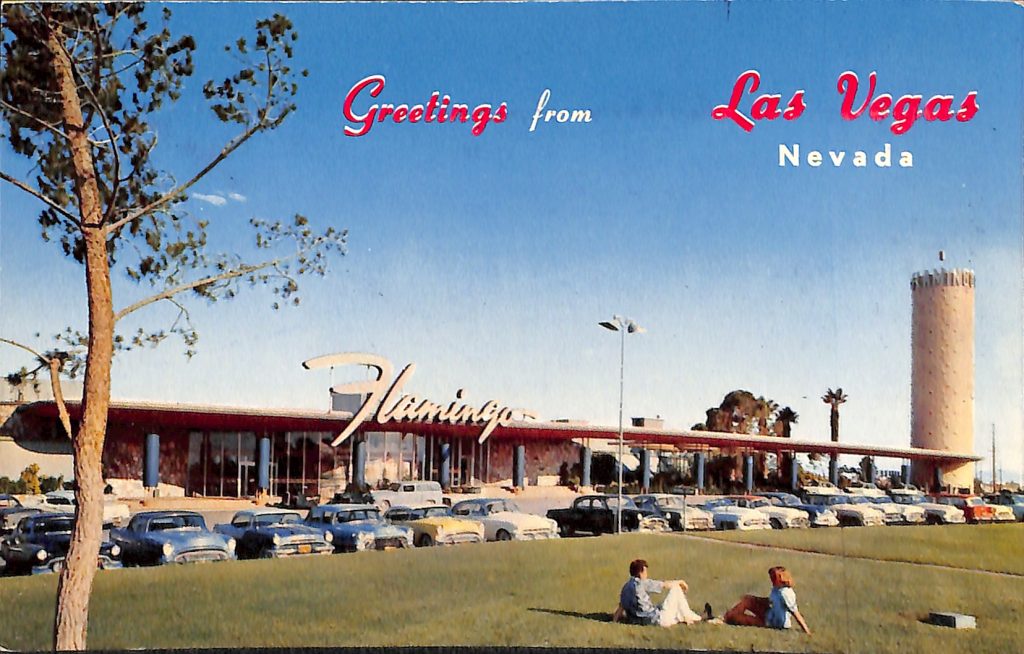 Siegel’s legitimate partner, L.A. nightclub owner Billy Wilkerson, who had started the resort in the first place and named it “the Flamingo,” had loaned him $600,000 a month before the opening. Siegel had yet to provide more than $1 million of the $3.6 million he owed his Arizona construction contractor Del Webb. Siegel recently borrowed $300,000 from Valley National Bank and other money from personal friends such as the actor Raft. A resort at first estimated to cost about $1.2 million had increased by some estimates to more than $6 million by March 1947.
Siegel’s legitimate partner, L.A. nightclub owner Billy Wilkerson, who had started the resort in the first place and named it “the Flamingo,” had loaned him $600,000 a month before the opening. Siegel had yet to provide more than $1 million of the $3.6 million he owed his Arizona construction contractor Del Webb. Siegel recently borrowed $300,000 from Valley National Bank and other money from personal friends such as the actor Raft. A resort at first estimated to cost about $1.2 million had increased by some estimates to more than $6 million by March 1947.
By late March, now featuring hotel rooms, activities and creature comforts superior to Siegel’s local competitors, the Flamingo’s fortunes turned the other way to higher revenues. By May, Siegel had shown a profit of $300,000. More film stars, including Gary Cooper, Wallace Berry and Susan Hayward, visited and generated publicity for the resort. But Siegel’s days were numbered. He had many enemies. The mobsters back East were fed up with the money they had fronted him with no return due to his inflated cost overruns. He recently had a bitter falling out with his partner in the Las Vegas race wire, Moe Sedway. One story goes that New York Mafia boss Charles “Lucky” Luciano ordered Costello himself to pay back the money other members of the gangster syndicate, known as the “Commission,” had invested with Siegel based on Costello’s advice. When Costello asked Luciano what was to come of Bugsy, Luciano replied, “Him I can’t help.”
Siegel flew from Las Vegas to Los Angeles in the early morning of June 20, 1947, to go to a home in Beverly Hills he rented with Virginia Hill to pick up his clothing before the lease ended. That evening, while Siegel sat on the couch in the house, a gunman fired a .30-caliber carbine from outside a window and hit Siegel four times, including in the face and chest, killing him instantly.
While many stories have surfaced over the years speculating about who ordered the hit and who fired the shots, his murder remains unsolved with the Beverly Hills Police Department. Employees at the Flamingo, just before Siegel was shot, noticed a group of grim-looking men in the showroom who suddenly got up and walked to various key departments at the Flamingo. Minutes after Siegel’s death, Gus Greenbaum and Morris Rosen stepped up and announced, to the shock of Flamingo employees, that Siegel was dead and they were taking over.
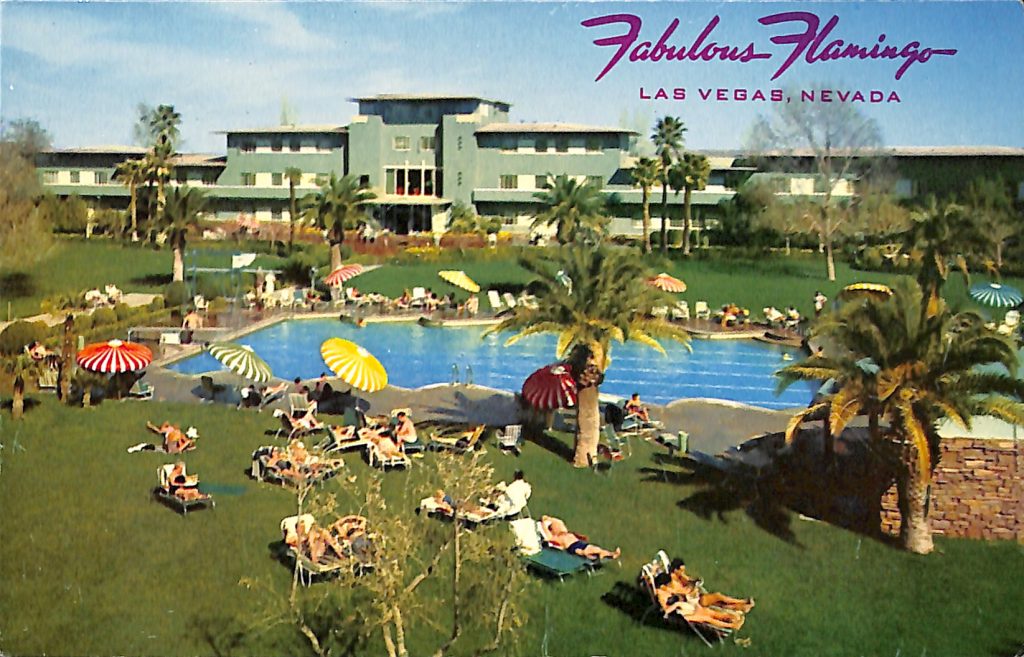 The Flamingo was someone else’s idea. Siegel forced his way in, by providing money Wilkerson desperately needed, and took over, in part with physical threats he directed at Wilkerson. But no doubt, while using other people’s money, the infamous Siegel executed and added much to what Wilkerson had envisioned. Despite his messy management and overspending, Siegel ultimately vindicated himself, even in death. The Flamingo, with its European-style casino, its theme and architecture out of the beachside hotels of Miami, eclipsed the early Western-themed, dude ranch-type hotels in Las Vegas during the 1940s and set a new standard of opulence and excess.
The Flamingo was someone else’s idea. Siegel forced his way in, by providing money Wilkerson desperately needed, and took over, in part with physical threats he directed at Wilkerson. But no doubt, while using other people’s money, the infamous Siegel executed and added much to what Wilkerson had envisioned. Despite his messy management and overspending, Siegel ultimately vindicated himself, even in death. The Flamingo, with its European-style casino, its theme and architecture out of the beachside hotels of Miami, eclipsed the early Western-themed, dude ranch-type hotels in Las Vegas during the 1940s and set a new standard of opulence and excess.
The Flamingo remains a prominent fixture on the Las Vegas Strip today, although none of the original architecture exists as the resort has undergone a number of major renovations over the past 70 years.
Feedback or questions? Email blog@themobmuseum.org





